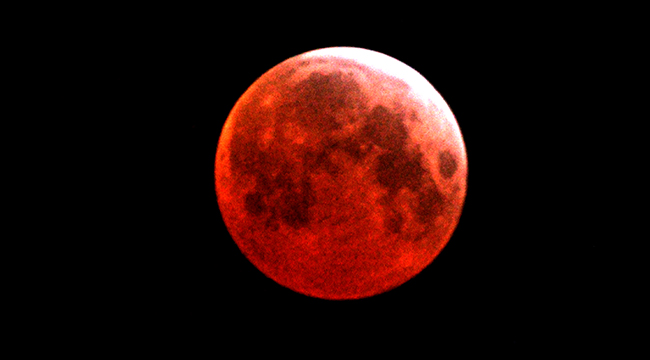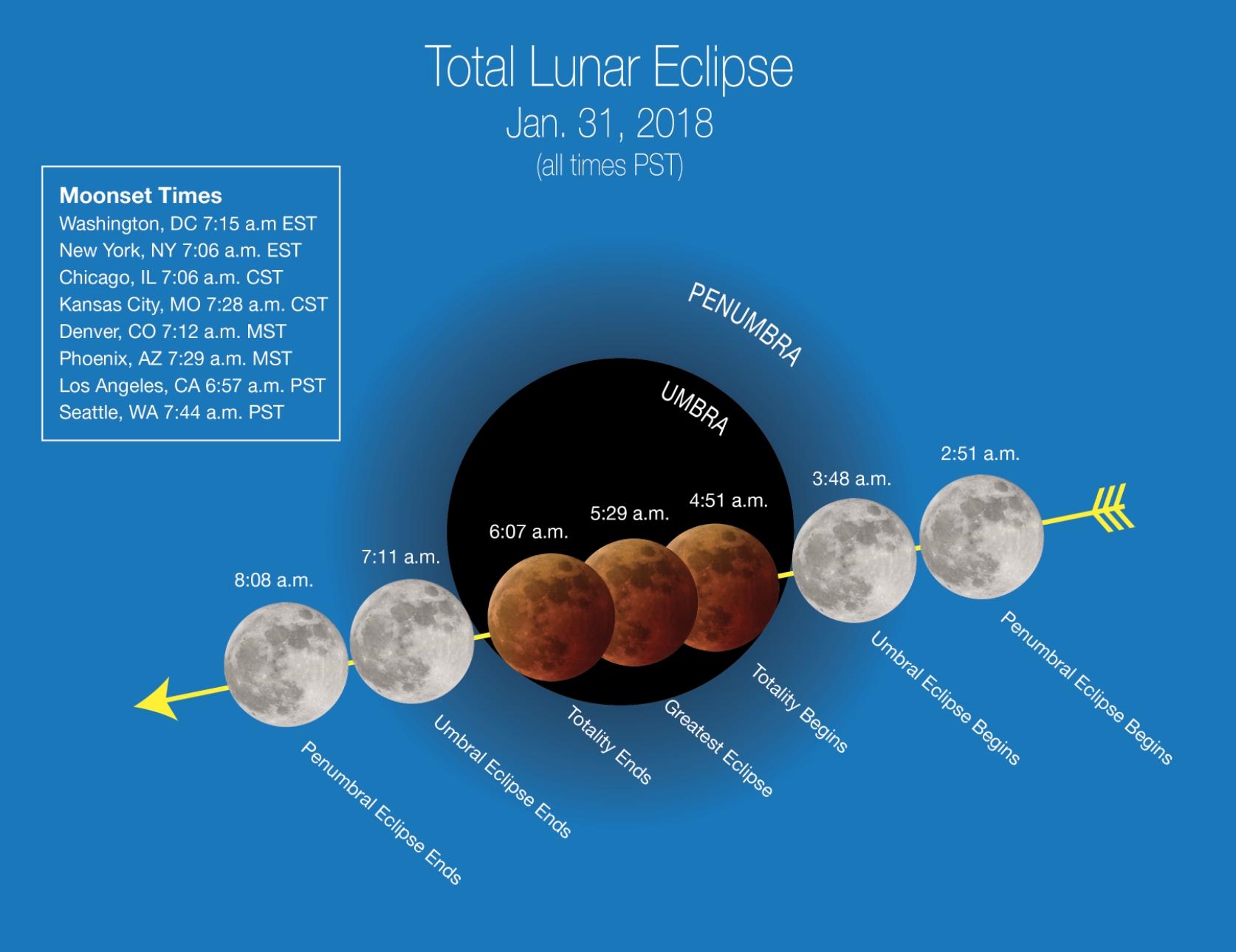
The last day of January is going to see an extremely rare moon — a massive traffic jam of celestial phenomena all piling up at once. NASA calls it the “super blue blood moon” and while that sounds like a badly translated anime title, it all makes sense when you know what each word represents.
Below you’ll find details about this bizarre moon, broken down by parts, plus how you can best see it and how to get a great picture of it.
What it is
Let’s start by unpacking each bit of the phrase “super blue blood moon:”
- “Super” means it’s a supermoon: As we explained back in November, a supermoon is unusually close to the earth, and thus looks larger in the sky. This supermoon will be 14% brighter than normal.
- “Blue” means it’s a blue moon: The blue doesn’t refer to color; a “blue moon” is when there are two full moons in the same month. Hence the old-timey saying “Once in a blue moon.”
- The “blood” is due to a lunar eclipse: Since the moon will be in the Earth’s shadow, as we explained in October, it will take on a reddish tint.
Individually, these phenomena happen relatively often, but all three at the same time is a “lunar trifecta.”
How to see it
The main question with this super blue blood moon — for most of us — is how to best see it.
Here’s the deal: On the West Coast, the eclipse will start at 3:48am and the totality of the eclipse will wrap up around 6am. Yes, friends, this is an AM viewing opportunity — set your alarms. In Mountain Time, it’ll start at 4:48, but Central and Eastern it’s a little trickier. You’ll need to be somewhere fairly high up at 5:48 or 6:48 respectively to see the whole thing unfold, and you’ll need to move quickly, as the moon sets around 6am and 7am, respectively.
Here’s a useful chart giving you a sense of the timing.

Getting photos
If you want a memorable photo, we recommend looking for moonrise or moonset. Those big, crisp clear images you see work because they’re in scale to their surroundings, and the West Coast, in particular, should get some brilliant vistas of the moon rising, while the rest of the country is better off looking for moonset. The higher up you are, and the broader the vista you can capture, the better, which is why you’ll find the Los Angeles hills full of photographers looking over the city this evening. If climbing a mountain isn’t to your taste, if you can get on top of a skyscraper or high-rise (legally, mind you!) with a clear view of moonrise or moonset, you should be able to get a good shot.
Oh, and, of course, remember to snap multiple shots. Even a smartphone should be able to pick up some good images of the moon as it rises and sets — but download an app that lets you manually control the exposure, such as Halide or Open Camera, as it can be tough to get a full look at the moon without manual controls.






